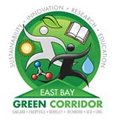


For decades nuclear scientists have searched for an Island of Stability among notoriously short-lived artificial heavy elements. Now researchers in Berkeley Lab’s Nuclear Science Division and UC Berkeley have made a step forward in the quest by confirming the production of the superheavy element 114, ten years after a group in Russia, at the Joint Institute for Nuclear Research in Dubna, first claimed to have made it. More>
 Stimulus Funding: John Conboy Gets $1.4 Million from NIH to Study RNA Splicing
Stimulus Funding: John Conboy Gets $1.4 Million from NIH to Study RNA Splicing John Conboy of the Life Sciences Division is receiving $1.4 million over two years for research into basic mechanisms that control gene expression during production of red blood cells in the bone marrow. The funds were made available by the American Recovery and Reinvestment Act and were awarded by the National Institutes of Health. Conboy’s studies focus on understanding a molecular switch in RNA splicing that occurs in red cell precursors. Understanding RNA splicing is important because proper splicing is essential for normal development. Conversely, aberrant splicing is a common cause of genetic disease and a factor in many human cancers.
 [San Francisco Chronicle] A NASA satellite has revealed more accurately than ever that polar ice in Antarctica and Greenland is melting from glaciers and ice sheets far faster than scientists had previously thought, a discovery that Berkeley Lab earth scientist Inez Fung calls "ominous and distressing." Using a laser aboard an orbiting spacecraft that precisely measures minute changes in the thickness of glaciers and ice sheets, scientists calculate that along the coast of West Antarctica's Amundsen Sea, for example, the massive Pine Island glacier and two others thinned by nearly 30 feet a year from 2003 to 2007, 50 percent faster than the glacier's thinning rate between 1995 and 2003. More>
[San Francisco Chronicle] A NASA satellite has revealed more accurately than ever that polar ice in Antarctica and Greenland is melting from glaciers and ice sheets far faster than scientists had previously thought, a discovery that Berkeley Lab earth scientist Inez Fung calls "ominous and distressing." Using a laser aboard an orbiting spacecraft that precisely measures minute changes in the thickness of glaciers and ice sheets, scientists calculate that along the coast of West Antarctica's Amundsen Sea, for example, the massive Pine Island glacier and two others thinned by nearly 30 feet a year from 2003 to 2007, 50 percent faster than the glacier's thinning rate between 1995 and 2003. More>
 The East Bay Green Corridor (EBGC) is a partnership between the mayors of local cities, UC Berkeley and Berkeley Lab that seeks to strengthen the regional economy through support for green and sustainable industries and alternative energy research. Carla Din, with EBGC, will visit the Lab on Tuesday, Sept. 29, at noon to discuss how her group can maximize its partnership with the Lab. The event takes place in Building 90-3122 and is sponsored by the Environmental Energy Technologies Division.
The East Bay Green Corridor (EBGC) is a partnership between the mayors of local cities, UC Berkeley and Berkeley Lab that seeks to strengthen the regional economy through support for green and sustainable industries and alternative energy research. Carla Din, with EBGC, will visit the Lab on Tuesday, Sept. 29, at noon to discuss how her group can maximize its partnership with the Lab. The event takes place in Building 90-3122 and is sponsored by the Environmental Energy Technologies Division.
 On Thursday, Oct. 15, the "Great California ShakeOut" will take place across the state, and Berkeley Lab will be participating. A Drop, Cover, Hold and Evacuate drill will take place at 10:15 a.m., similar to those conducted during the Lab’s Emergency Preparedness Week last spring. Instruction will be provided via a public address announcement. The drill should last no more than 20 minutes. All participants in the ALS User Conference that day will be exempt from participation. After the drill, the exercise will be evaluated using an online survey. Go here for more information, or contact Rocky Saunders (x7032).
On Thursday, Oct. 15, the "Great California ShakeOut" will take place across the state, and Berkeley Lab will be participating. A Drop, Cover, Hold and Evacuate drill will take place at 10:15 a.m., similar to those conducted during the Lab’s Emergency Preparedness Week last spring. Instruction will be provided via a public address announcement. The drill should last no more than 20 minutes. All participants in the ALS User Conference that day will be exempt from participation. After the drill, the exercise will be evaluated using an online survey. Go here for more information, or contact Rocky Saunders (x7032).
Due to an increased demand for the "All Hazard Awareness" course (EHS0135), the Lab's Emergency Services Program will offer an additional training session before the end of the fiscal year. The class will be held in Building 48-109 on Tuesday, Sept. 29, from 10 a.m. to noon. Go here to register. For more information, contact Sara Wynne (x5861).
From a postdoc benefits orientation to an "Organizing Your Financial Life" workshop, the HR Benefits department hosts a number of events to help staff manage their work and life. To assist in tracking upcoming events, the department produces a monthly calendar, and the October edition is now available.
Today at Berkeley Lab is produced by Public Affairs' Communications Group